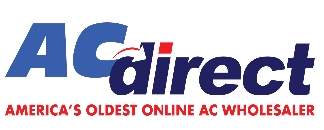HVAC System Retrofitting: Upgrading Older Systems to Meet 2025 Energy Standards and Consumer Demand for Efficiency
-
 By
Michael Haines
By
Michael Haines
- Feb 14, 2025

By Mike Haines 2/14 Hey there, I’m Michael Haines from AC Direct, where I’ve spent the last 30 years helping folks like you navigate the ever-changing world of HVAC systems. As we sit here on February 18, 2025, the industry is buzzing with new energy standards and a push for efficiency that’s reshaping how we heat and cool our homes. With my three decades of hands-on experience, I’ve seen trends come and go, but the focus on retrofitting older HVAC systems to meet today’s demands? That’s a game-changer worth talking about. At acdirect.com, we’re all about giving you the tools—and the systems—to stay ahead of the curve. Let’s dive into how retrofitting can bring your older setup up to 2025 energy standards and satisfy the growing call for efficiency.
Why Retrofitting Matters in 2025
Retrofitting isn’t just a buzzword—it’s a practical solution for homeowners and businesses stuck with aging HVAC systems that don’t quite cut it anymore. The U.S. Department of Energy rolled out stricter efficiency standards this year, pushing SEER2 (Seasonal Energy Efficiency Ratio) and HSPF2 (Heating Seasonal Performance Factor) benchmarks higher than ever. If your system’s from the early 2000s, it’s probably hovering around 10 SEER—modern units, like the ones we carry at acdirect.com, hit 22 SEER or more. That’s a massive leap in efficiency, and retrofitting can bridge the gap without the full cost of a new install.
On top of that, the EPA’s refrigerant mandate kicked in January 1, 2025, phasing out R-410A in favor of A2L refrigerants like R-32 and R-454B. Older systems weren’t built for these new fluids, but retrofitting can adapt them—or at least extend their life until you’re ready to upgrade. Consumer demand is driving this too; folks want lower bills and greener homes, and retrofitting delivers both.
Assessing Your Current System
Before you start, you need to know what you’re working with. I’ve been in enough homes to tell you that a 15-year-old unit might still hum along, but it’s likely chewing through energy like it’s 1995. Start with a professional inspection—check the SEER rating, refrigerant type, and ductwork condition. If your system’s R-22 or early R-410A, it’s not just outdated; it’s costly to maintain now that supplies are shrinking.
Look at performance too. Uneven temperatures or spiking bills? That’s your cue. At AC Direct, we’ve got techs who’ve seen it all, and we can help you figure out if retrofitting makes sense or if it’s time for something new, like our Goodman 3 Ton 15.2 SEER2 Heat Pump.
Key Retrofitting Strategies
Retrofitting isn’t one-size-fits-all—it’s about targeting the weak spots. Here’s what I’ve learned works best:
Upgrading Components
Swap out old compressors or coils for modern, variable-speed versions. These adjust output based on need, cutting energy waste. For example, adding a variable-speed blower to a decent furnace can boost efficiency without replacing the whole unit.
Refrigerant Conversion
If your system’s R-410A-compatible, you might retrofit it for R-454B with new valves and seals. It’s tricky—those A2Ls are mildly flammable—so hire a pro who’s trained up. This keeps you compliant with 2025 rules and squeezes more life out of your setup.
Smart Controls
Adding a smart thermostat, like the ones we stock at acdirect.com, can transform an old system. They learn your habits, optimize run times, and let you control it from your phone. It’s a cheap upgrade with big returns.
Ductwork Optimization
Leaky ducts can kill efficiency—up to 30% of your air might vanish before it hits the room. Sealing or insulating them is a retrofitting must. Pair that with a high-efficiency unit like our MRCOOL Universal 4-5 Ton Heat Pump, and you’re golden.
Meeting 2025 Energy Standards
The 2025 standards aren’t messing around—new systems need higher SEER2 and HSPF2 ratings, and retrofits can get you close. A well-executed retrofit might lift a 13 SEER unit to 16 or 17 SEER2 territory with the right upgrades. That’s enough to dodge fines in stricter states and cash in on rebates from the Inflation Reduction Act, which still offers up to $2,000 for efficient heat pumps.
Consumer Demand for Efficiency
Homeowners today aren’t just chasing comfort—they’re after savings and sustainability. I’ve talked to countless folks who’ve seen their bills drop 20-30% after retrofitting. It’s why we’re seeing a boom in orders at acdirect.com for efficient gear. People want systems that sip energy, not guzzle it, and retrofitting meets that need without breaking the bank.
Cost vs. Savings Breakdown
Retrofitting isn’t cheap—expect $1,000 to $5,000 depending on scope—but it’s half the cost of a new system. A full replacement, like our Goodman 4 Ton 16 SEER AC, might run $6,000-$10,000 installed. Retrofits pay off faster, though; improved efficiency can save $200-$500 a year on bills, recouping costs in 3-5 years.
Challenges and Considerations
It’s not all smooth sailing. Older systems might not handle new refrigerants without major work, and some retrofits won’t hit full 2025 compliance. Plus, you need a tech who knows A2Ls—training gaps are real in early 2025. Still, with AC Direct’s support and units built for today’s rules, you’ve got options.
Retrofit Smart, Save Big
Retrofitting’s the bridge between yesterday’s HVAC and tomorrow’s standards. It’s practical, cost-effective, and meets the efficiency demands of 2025. Whether you’re tweaking an old unit or eyeing a new one from acdirect.com, now’s the time to act. With 30 years under my belt, I can tell you this: a little investment today keeps your system—and your wallet—happy for years. Let’s make your home efficient together.

 and now, NASCAR Racing Sponsor
and now, NASCAR Racing Sponsor










